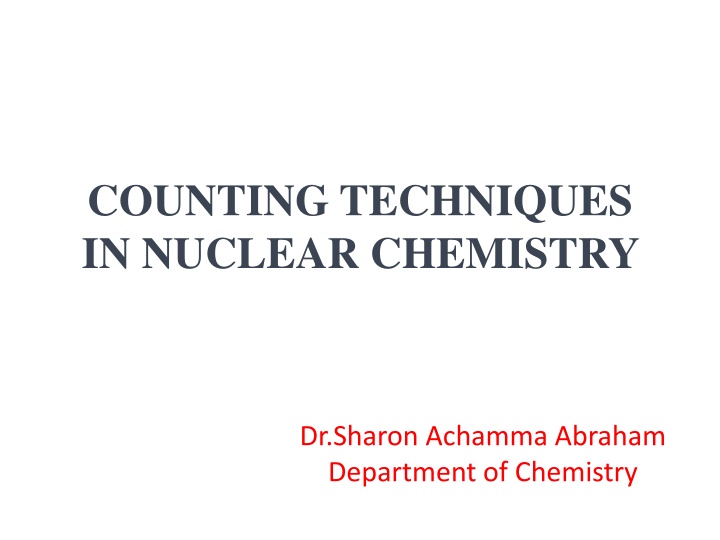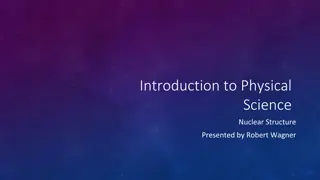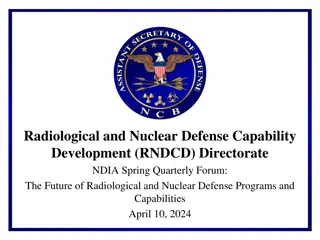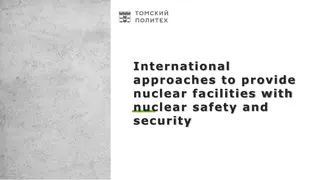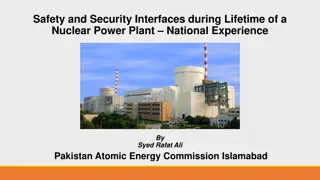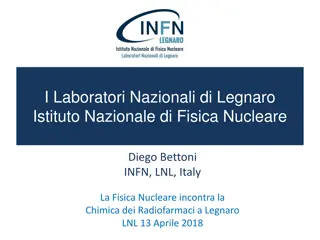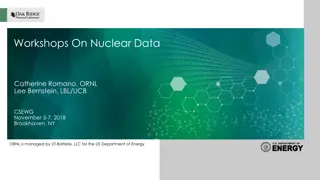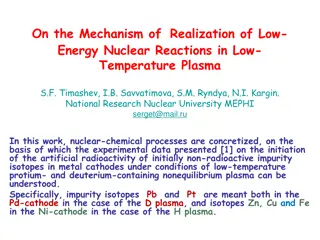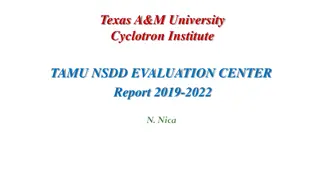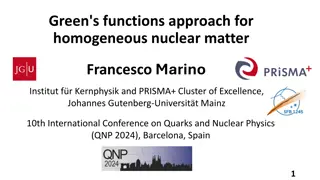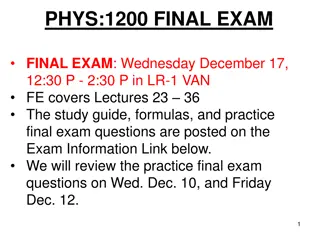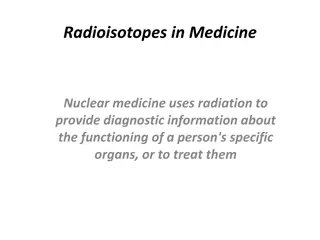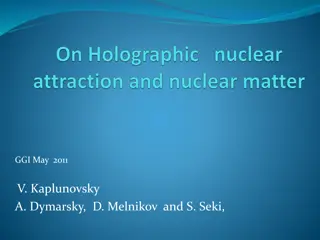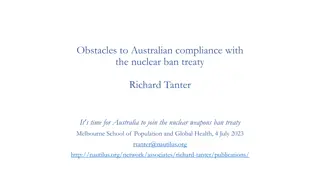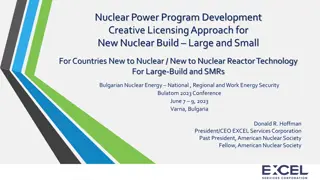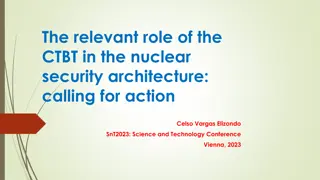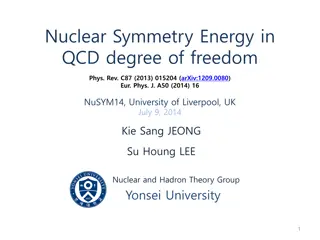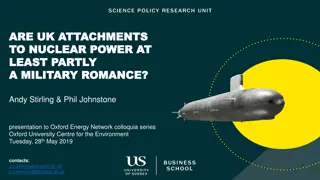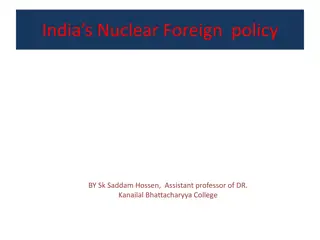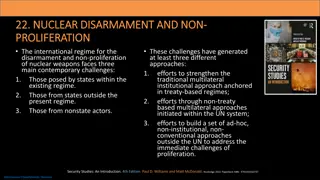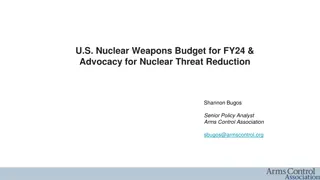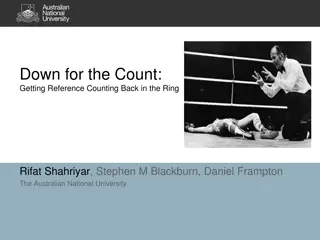COUNTING TECHNIQUES IN NUCLEAR CHEMISTRY
The basic principle behind the detection of nuclear particles involves ionization or excitation of atoms/molecules when matter absorbs energies of nuclear particles. Common techniques for detection include GM Counter, Ionization Counter, Proportional Counter, Scintillation Counters, and Cloud Chambers. Each method utilizes specific components and processes to detect and measure nuclear particles accurately.
Download Presentation

Please find below an Image/Link to download the presentation.
The content on the website is provided AS IS for your information and personal use only. It may not be sold, licensed, or shared on other websites without obtaining consent from the author.If you encounter any issues during the download, it is possible that the publisher has removed the file from their server.
You are allowed to download the files provided on this website for personal or commercial use, subject to the condition that they are used lawfully. All files are the property of their respective owners.
The content on the website is provided AS IS for your information and personal use only. It may not be sold, licensed, or shared on other websites without obtaining consent from the author.
E N D
Presentation Transcript
COUNTING TECHNIQUES IN NUCLEAR CHEMISTRY Dr.Sharon Achamma Abraham Department of Chemistry
The basic principle behind the detection of nuclear particles is the ionization or excitation of atoms/molecules when matter absorbs energies of nuclear particles. Common techniques used for the detection and quantitative measurement of nuclear particles are, GM Counter Ionization Counter Proportional Counter Scintillation Counters Cloud chambers
GM Counter Developed by Geiger and Muller for counting ionization radiations. Consists of a cylindrical tube made of metal closed with thin glass or mica window at one end serves as cathode.A coaxial tungsten wire at other end acts as anode. When an ionizing radiaton passes through the gas filled chamber ion pairs are formed which results an electric current at the electrodes. The magnitude of ionization current depend on the number of ion pairs formed and on applied voltage.
Proportional counter Proportional counters are photon counting devices. Consists of a gas-filled chamber fitted with one or more x-ray transparent windows. Photons penetrate the window and pass into the gas inside where interactions with the gas atoms result in the creation of a number of electrons which inturn produce secondary electrons and cause further ionization .
Ionization Counter Essential components of the ionization counter are it s two collecting electrodes;the anode and cathod. Presence of radiation causes charged particles to traverse the gas inside the ionization chamber. Movement of charged particles through the chamber ionizes the atoms or molecules of the gas forming ion pairs. The ion pairs move to the electrodes result in an electric pulse.
Scintillation counter Uses the effect known as scintillation. Scintillation is a flash of light produced in a transparent material by the passage of a particle. Consists of a scintillator or phosphor coupled to a PMT which produces a pulse when light is transmitted to tube from the scintillator. The basic principle of operation involves the radiation reacting with a scintillator, which produces a series of flashes of varying intensity. The intensity of the flashes is proportional to the energy of the radiation. Scintillating material can be inorganic crystal or an organic solid,liquid or gas.
Cloud chambers Also known as Wilson chamber Basic principle is charged ions can serve as nuclei of condensation of water droplets in a dust free atmosphere of air- water vapour mixture under the conditions of supersaturation . Fine droplets of liquid in the form cloud or mist is observed along the path of radiation. Condensation tracks have life time less than a second and can be photographed through chamber window. tracks appears as straight lines of dense fog droplets, are less dense, and X-rays yield very faint cloud tracks.
